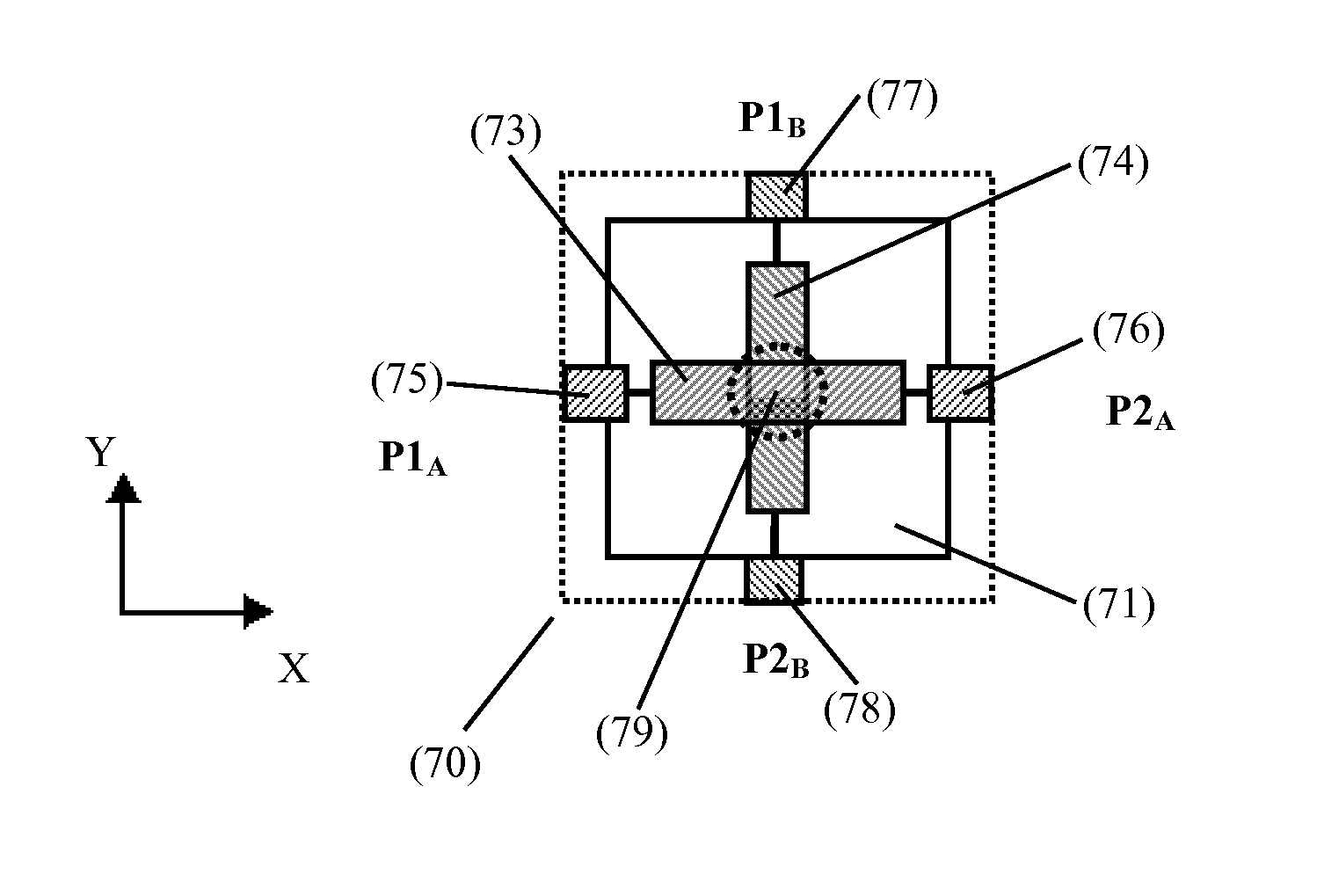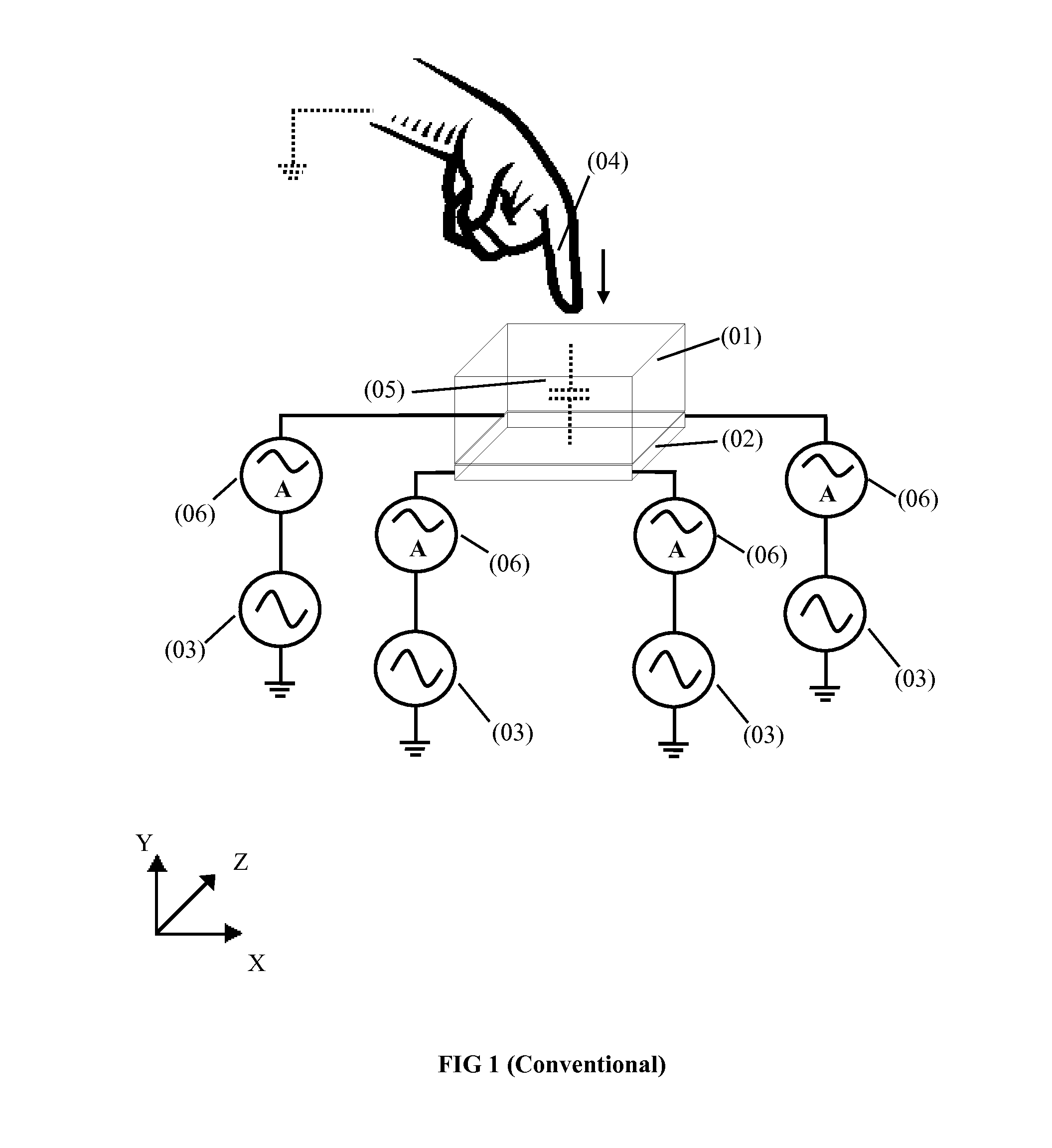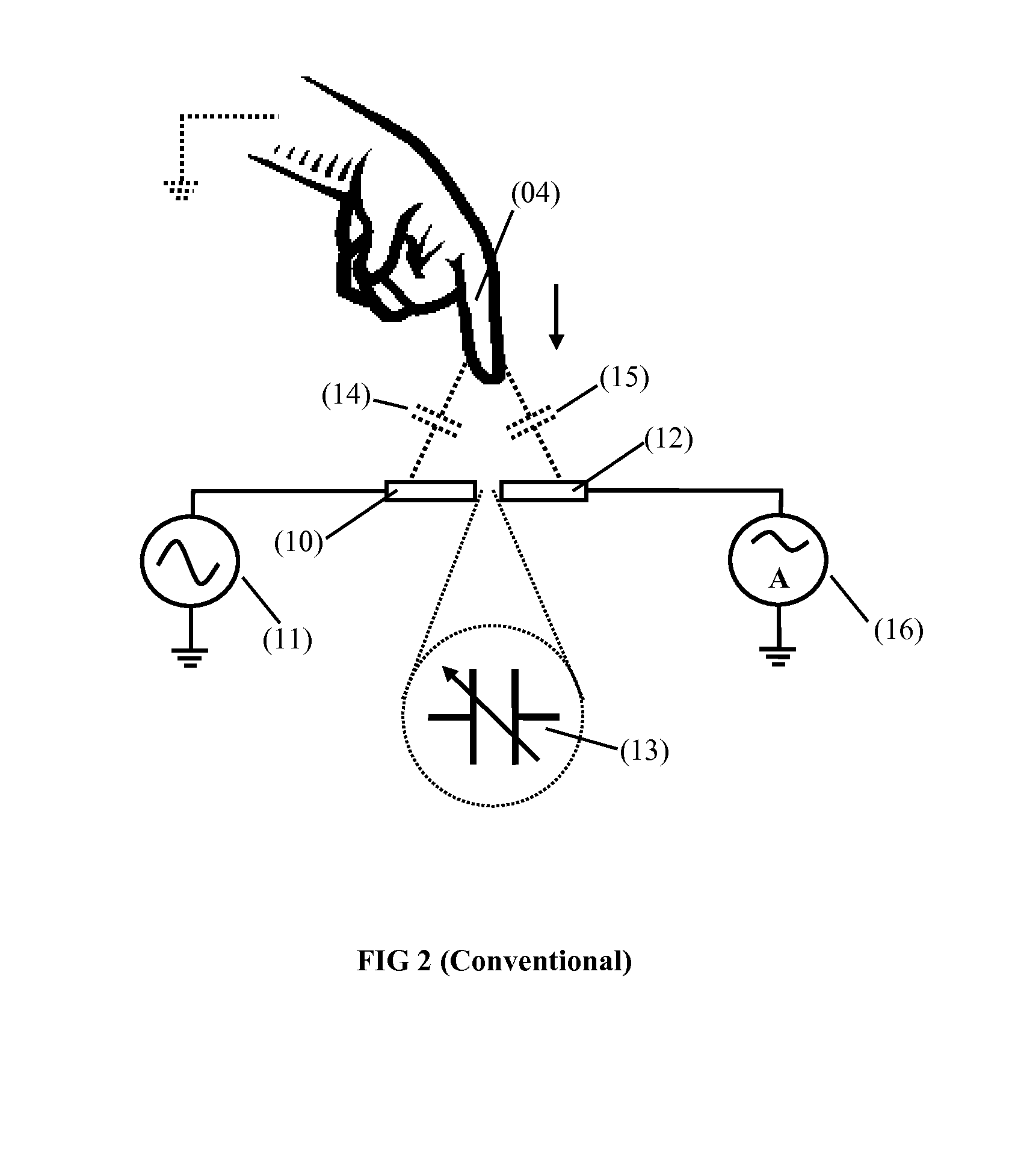Dual-function transducer for a touch panel
a multi-function transducer and touch panel technology, applied in the field of touch screens, can solve the problems of inability to detect the force of touch input, significant limitations, and the inability of surface capacitive type systems to detect multiple simultaneous touch input events, and achieve the effect of maximizing the spatial resolution of the touch panel
- Summary
- Abstract
- Description
- Claims
- Application Information
AI Technical Summary
Benefits of technology
Problems solved by technology
Method used
Image
Examples
fourth embodiment
[0217]In a fourth embodiment, the dual-function transducer is formed by a set of row electrodes (FIG. 15A) and a set of column electrodes (FIG. 15B) arranged orthogonally in a matrix. As shown in FIG. 15C, the set of row electrodes (108) is formed on the first surface of the transparent substrate (71) and the set of column electrodes (109) is formed on the second surface of the transparent substrate (71). Each of the row and column electrodes is patterned to form a strain sensor according to the pattern of FIG. 7C. As can be seen in FIG. 15A and FIG. 15B, in the space between each of the row electrodes and column electrodes, a number of dummy features (133), which are preferably made of the same material as the electrodes, can be created to improve the visual appearance of the surface on which the electrodes reside. This arrangement may be considered as a dual-layer structure whereby the set of row electrodes (108) generate signals corresponding to strain induced by compressive forc...
sixth embodiment
[0220]In the present invention, an array of dual-function transducers is built employing a single-layer structure. The structure consists of a substrate (71) and a single-layer transducer arrangement (156) formed on or over the substrate, wherein the single-layer transducer arrangement may be made, for example, of interlocking rhombuses. However, the structure arrangement can be made of any other geometric pattern. The single-layer transducer arrangement (156) further comprises an electrode grid layer (151), an insulating layer (152) formed over the grid layer (151), and a metal bridge layer (153) formed over the insulating layer 152, see cross-sectional view in FIG. 18A. In a preferred configuration of this embodiment, shown in FIG. 18B, a set of row electrodes (108) is formed by individual row electrodes (127) in a transparent conductive material directly on the substrate (71) and patterned to form a set of rhomboidal strain sensors (141) which are connected in series. A set of co...
seventh embodiment
[0221]In the present invention the mechanical layout of the stack is arranged as a dual-layer structure with improved optical uniformity, strain responsivity and noise immunity. In a preferred configuration of this embodiment, shown in FIG. 19, the dual-layer electrode structure consists of a first transparent substrate (71), a set of row electrodes (108) formed by individual row electrodes (127), a bonding electrical insulator (191), a set of column electrodes (109), formed by individual column electrodes (128) and a second transparent substrate (71). The set of row electrodes (108) can be patterned to form a strain sensitive structure as described in previous embodiments, for example, in a rhomboidal pattern. This set of row electrodes (108) is formed on the top surface of the first transparent substrate (71) and forms a first layer (192). The set of column electrodes (74) are patterned to form a strain sensitive structure and are formed on the bottom surface of the second transpa...
PUM
 Login to View More
Login to View More Abstract
Description
Claims
Application Information
 Login to View More
Login to View More - R&D
- Intellectual Property
- Life Sciences
- Materials
- Tech Scout
- Unparalleled Data Quality
- Higher Quality Content
- 60% Fewer Hallucinations
Browse by: Latest US Patents, China's latest patents, Technical Efficacy Thesaurus, Application Domain, Technology Topic, Popular Technical Reports.
© 2025 PatSnap. All rights reserved.Legal|Privacy policy|Modern Slavery Act Transparency Statement|Sitemap|About US| Contact US: help@patsnap.com



